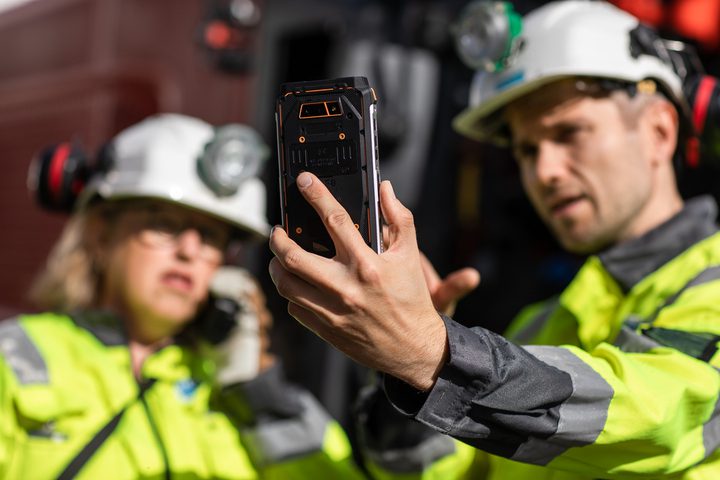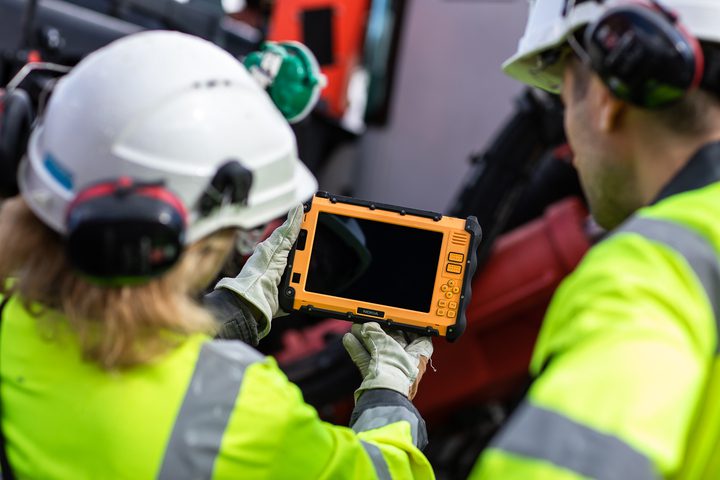How Private Wireless Solutions Enable Digital Power Plants’ Transformation
Digital transformation is key to making industries more agile, resilient, and sustainable. These are essential qualities if businesses are not only to survive but thrive in the Industry 4.0 era—and the energy industry is no exception.
With price volatility set to continue in the natural gas and carbon energy markets, and growing pricing pressure coming from wind and solar, energy operators must increase agility and resilience in their power generation to allow them to respond more flexibly and reliably. At the same time, more is being asked of them from a regulatory perspective, and many are working toward net zero goals.
While power generation plant sub-systems have long relied on automation for accurate fuel delivery, to regulate pressure, and transfer power to transmission and distribution systems, power plant operators are taking automation to a new level, turning to industrial-grade private wireless to support their digital transformations. Many plants today use Wi-Fi connectivity, but this technology is susceptible to interference and doesn’t provide the coverage, capacity, low-latency connectivity, or quality of service to reliably connect critical operations on a larger scale. The upgrade to Wi-Fi 6 will enhance the capacity, latency, and data rate, but should still only be reserved for connecting information technology (IT) applications.
Designed to provide reliable coverage in areas with high interference, industrial-grade private 4G/LTE and 5G broadband wireless networks are perfectly suited to support the digitalization of power plant operations. They allow plant operators to connect numerous low-cost, low-power Industrial Internet of Things (IIoT) sensors to assets flexibly and securely to access huge volumes of real-time operational data. This enables the implementation of Industry 4.0 applications (Figure 1), allowing plant operators to apply machine learning, artificial intelligence (AI), advanced analytics, and more to this data to gain new value and intelligence.

When using private LTE Narrowband IoT (NB-IoT) connectivity to IIoT sensors, tasks that were previously too costly are made possible, such as the remote monitoring of processes and equipment including cooling towers, retention ponds, steam traps, and pH levels and corrosion. Team safety and efficiency can be enhanced too.
Growing the Communications Toolkit to Enhance Safety
Private wireless networks already play a vital role in enhancing worker safety for many industries. Supporting the push-to-talk voice feature enabled by traditional ultra-high-frequency (UHF)/very-high-frequency (VHF), TErrestrial Trunked RAdio (TETRA), and Project 25 (P25) radio systems, private 4G/LTE and 5G networks can be a workplace safety technology supporting a dramatically enhanced toolkit for maintenance teams and other onsite personnel.
Leveraging high-bandwidth, low-latency connectivity allows maintenance workers to share real-time video with central control teams and remote specialists to speed up issue identification and resolution. Logs, schematics, and current and historical operational information can also be delivered to the worker’s device, so all critical data is available in real-time. Additionally, for greater insight and assistance, data can be overlaid directly onto the equipment being worked on using artificial reality.
Artificial reality and virtual reality can also be used to enhance training by providing a ‘real-feel’ training environment wherever the trainee is. New recruits are afforded more time to train on expensive equipment and in a range of hazardous situations in safety, while experienced engineers can be updated on new techniques, safety procedures, and technologies.
Real-time data feeds from environmental sensors at power generation plants can alert onsite and central teams to critical issues, such as gas leaks or a rise in radiation levels, before they become dangerous. Wearable sensors allow teams to monitor the vital health signs of workers and quickly respond if they get into difficulty. Additionally, wearable body cameras provide additional insight for control teams and first responders, giving a greater understanding of a situation and allowing them to pinpoint the location of injured personnel.
Workers have even more flexibility to communicate with their teams without having to remove protective gloves or helmets using industrial-grade LTE user equipment (Figure 2). This includes a growing ecosystem of ruggedized devices, including hand-held remote speaker microphones (RSM), helmets integrated with headsets, and noise cancellation headsets that can be implemented and managed using private LTE networks.

Managing Site Security
The sheer size and location of some power plants can mean it’s too costly to employ staff to monitor and secure all areas in-person 24/7. But pervasive private LTE network coverage allows plant operators to quickly connect new sensors and devices to significantly broaden the reach of their security teams, whatever the location.
Geo-fencing applications can be used for the security and safety of workers and the public. If a worker enters an area that should be avoided, their wearable sensor can trigger an alarm. These types of applications can also be used at remote plants, alerting central security teams to any unauthorized activity at a site. To further limit human activity in restricted sites where it could be too hazardous for a person to work, remote-controlled robots can be activated on the network to automate maintenance activities.
By connecting drones and robots equipped with cameras, plant operators can enable additional monitoring at large and remote sites for enhanced safety and security. Drones can be operated by personnel connected to the private LTE network or set to follow routine patrol paths. By equipping drones with speakers, they can be used to notify members of the public that they are in a restricted or hazardous location. Using machine learning techniques and AI, anomalies on video feeds, such as human activity where none is expected, can be automatically detected and trigger alerts to security teams to investigate.
Optimizing Operational Efficiency with a Holistic View of Data
The pervasive low-latency connectivity provided by industrial-grade private LTE networks will take on even greater importance as wholesale price volatility continues. With an end-to-end view of operations, plant operators will have tighter control over assets, gaining a greater understanding of performance trade-offs.
By leveraging continuous data feeds, automated anomaly detection and alerts, and maintenance activities, will become predictive. If potential problems are detected, teams can resolve them before they become an issue, meaning repair costs are reduced, and the lifecycle of equipment is extended. Remote inspections will allow plant operators to keep costs down as more isolated sites are integrated into the distribution system.
Even as new assets are added within a power plant, a private LTE network will connect them more rapidly and cost-effectively than fiber and more reliably than Wi-Fi. Plant operators can also leverage sensor data to implement digital twins, which allow them to see how changes impact operations before committing to the cost of implementing them in the real world. Digital twins are particularly effective for critical functions such as asset management, resource and expansion planning, and computerized maintenance and management systems.
Adopting a Future-Proof Technology with Consolidated Operations
Today’s power plants consist of multiple communications networks for operations, including private radio, Wi-Fi, and other wireless IoT systems, such as Bluetooth Low Energy (BLE), Long-Range Radio (LoRa), and other unlicensed narrowband wireless technologies. A private LTE network allows them to incorporate, complement, or replace these technologies and consolidate operations, reducing the time and cost of maintaining and securing separate networks. And there’s no need to compromise on space as 4G/LTE and 5G small cell radios are typically the size of Wi-Fi access points.
With the ability to implement 4G/LTE and smoothly evolve to 5G when applications require it, a private wireless network offers numerous capabilities for plant operators. There is a well-established and growing vendor ecosystem of 4G/LTE-equipped sensors, devices, applications, and connected personal protection equipment. Many of those vendors are now launching similar devices and equipment for 5G.
The digitalization of power plant operations is a catalyst for a new era of communications technology optimized for operational transformation. By adopting an industry standards-based technology that will allow them to simply integrate a mix of vendors’ offerings, power plants will have the greatest flexibility and resilience in their operations.
Industrial-grade private wireless will help manage the juggling act of driving down costs and implementing new agility and responsiveness to enhance operations and worker safety, helping power plant operators to achieve their Industry 4.0 goals.
—Dominique Verhulst is Head of Global Energy Practice at Nokia.